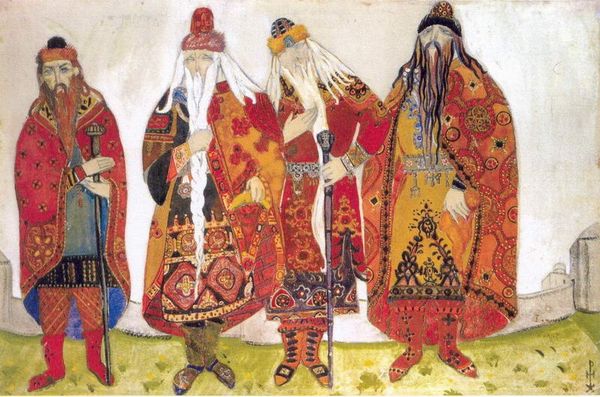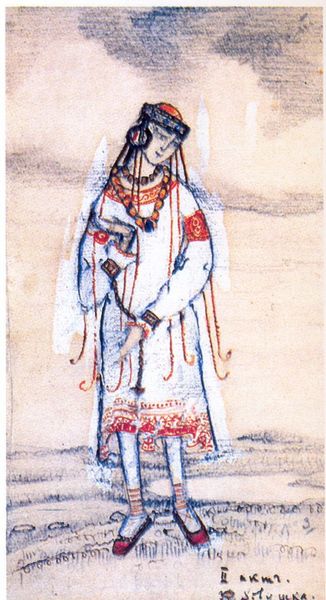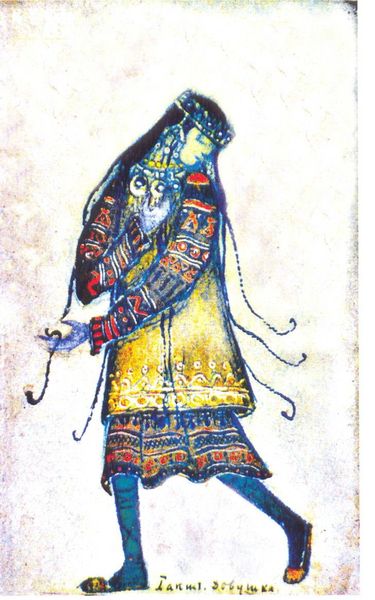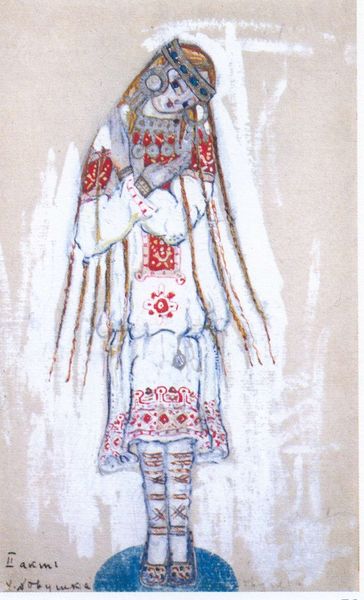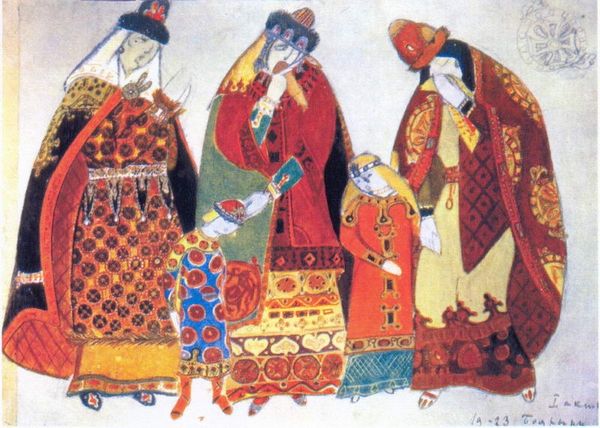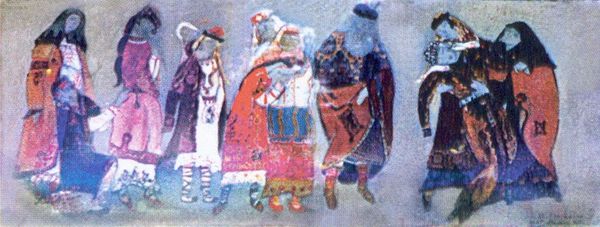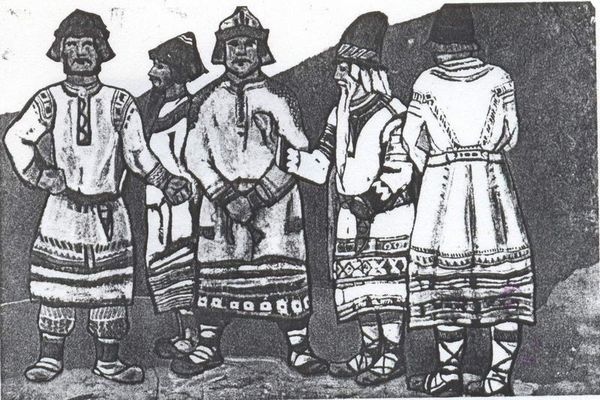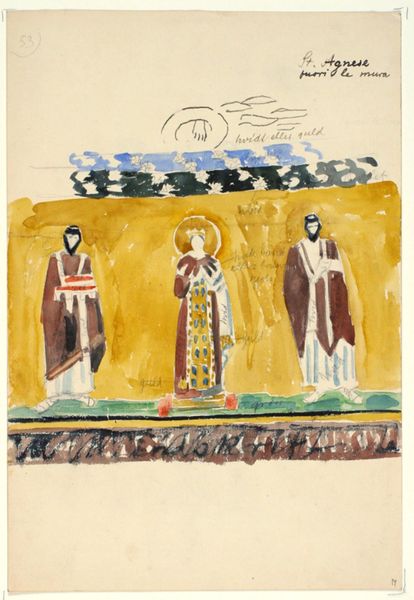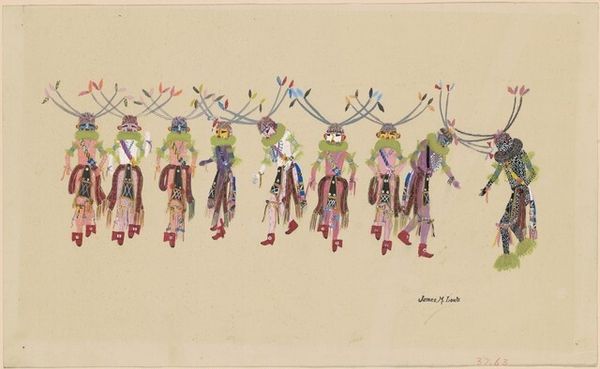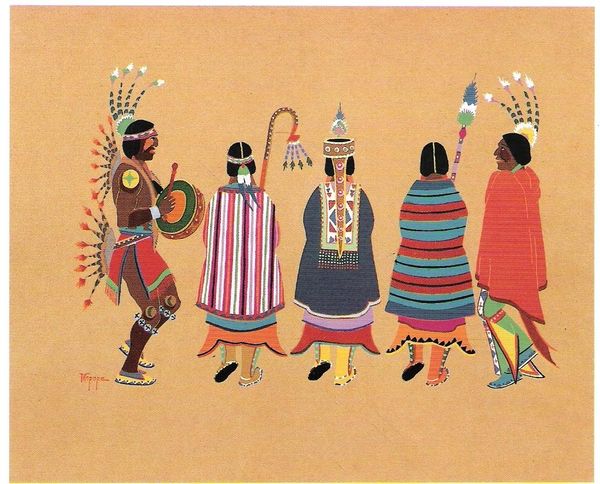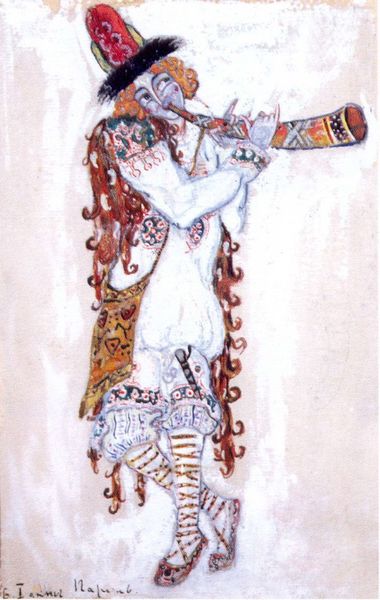
drawing, painting, watercolor
#
portrait
#
drawing
#
painting
#
watercolor
#
group-portraits
#
symbolism
#
russian-avant-garde
#
academic-art
#
mixed media
Copyright: Public domain
Curator: This watercolor and mixed-media work, titled "Three Personages," was completed by Nicholas Roerich in 1913, placing it squarely in the Russian Avant-Garde movement. The artwork resides in the Bakhrushin Theater Museum in Moscow. Editor: My first thought is a kind of solemnity. There's a static, almost ritualistic feel to their arrangement and expressions, like figures in an ancient fresco. Curator: That's perceptive. Roerich was deeply interested in symbolism and the spiritual weight of historical imagery. Considering the period, pre-revolutionary Russia was a hotbed for new explorations of national identity, and Roerich’s work here evokes Russia's medieval past through these figures and their traditional garments. Editor: The stylized faces certainly point to a focus beyond pure representation, more about conveying a specific idea. I’m drawn to how their clothes signify status and history; what can you tell me about that from a historical context? Curator: Costume designs often became imbued with cultural significance, particularly when referencing specific periods or regions. It seems that he sought inspiration from early Slavic dress, reflecting an idealized image of Russia's past, and the costumes certainly played a part in constructing a narrative for whatever production these figures were for. He saw history not as something past and done with, but as a source of ongoing symbolic power. The clothes denote that they might belong to early Slavic communities. Editor: Interesting. So it’s not just historical recreation, but a reimagining through a specific lens? And their faces almost look like masks— further removing any pretense of objective portraiture. Instead of individual personalities, are we seeing types, even archetypes? Curator: Absolutely. These characters aren’t specific individuals. Their visual representation evokes emotional, cultural and psychological echoes from the Slavic past. Note the ornamental patterning too. Such detail would’ve conveyed a clear meaning to contemporary audiences familiar with Russian folklore and identity. Editor: Makes me wonder what narratives they evoked for early 20th-century viewers versus what we see now. Regardless, this image holds a unique fascination—the layers of representation create a compelling mystery. Curator: Indeed. "Three Personages" remains a compelling lens through which to examine the intersection of art, theatre, and national identity in a time of significant cultural transformation.
Comments
No comments
Be the first to comment and join the conversation on the ultimate creative platform.
